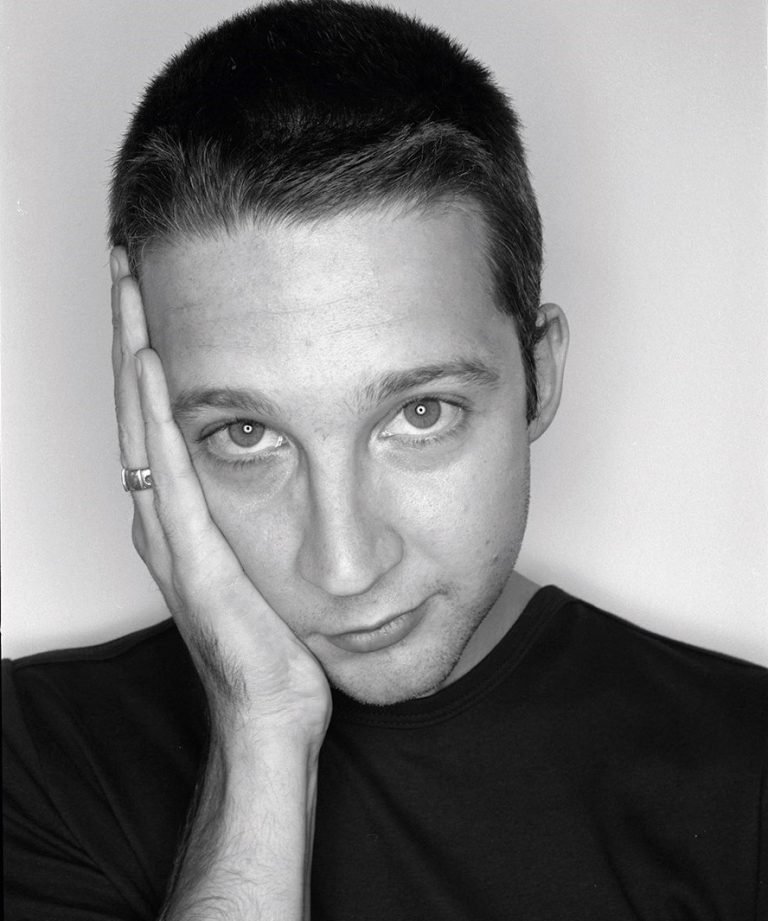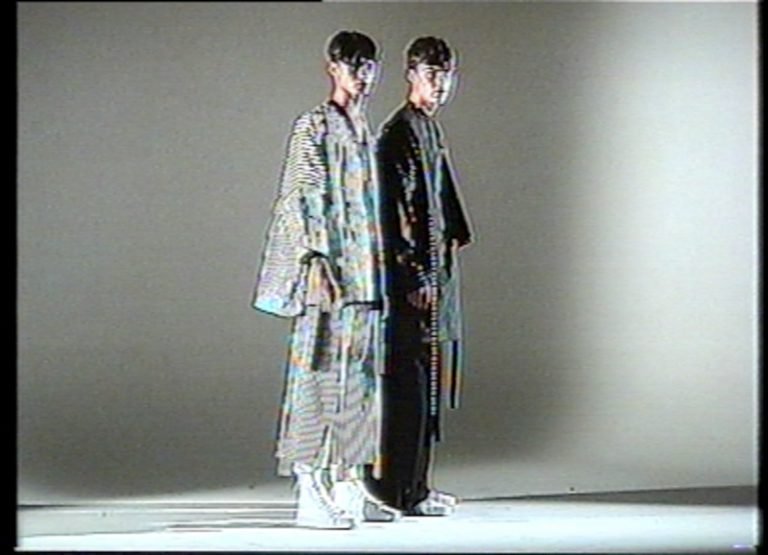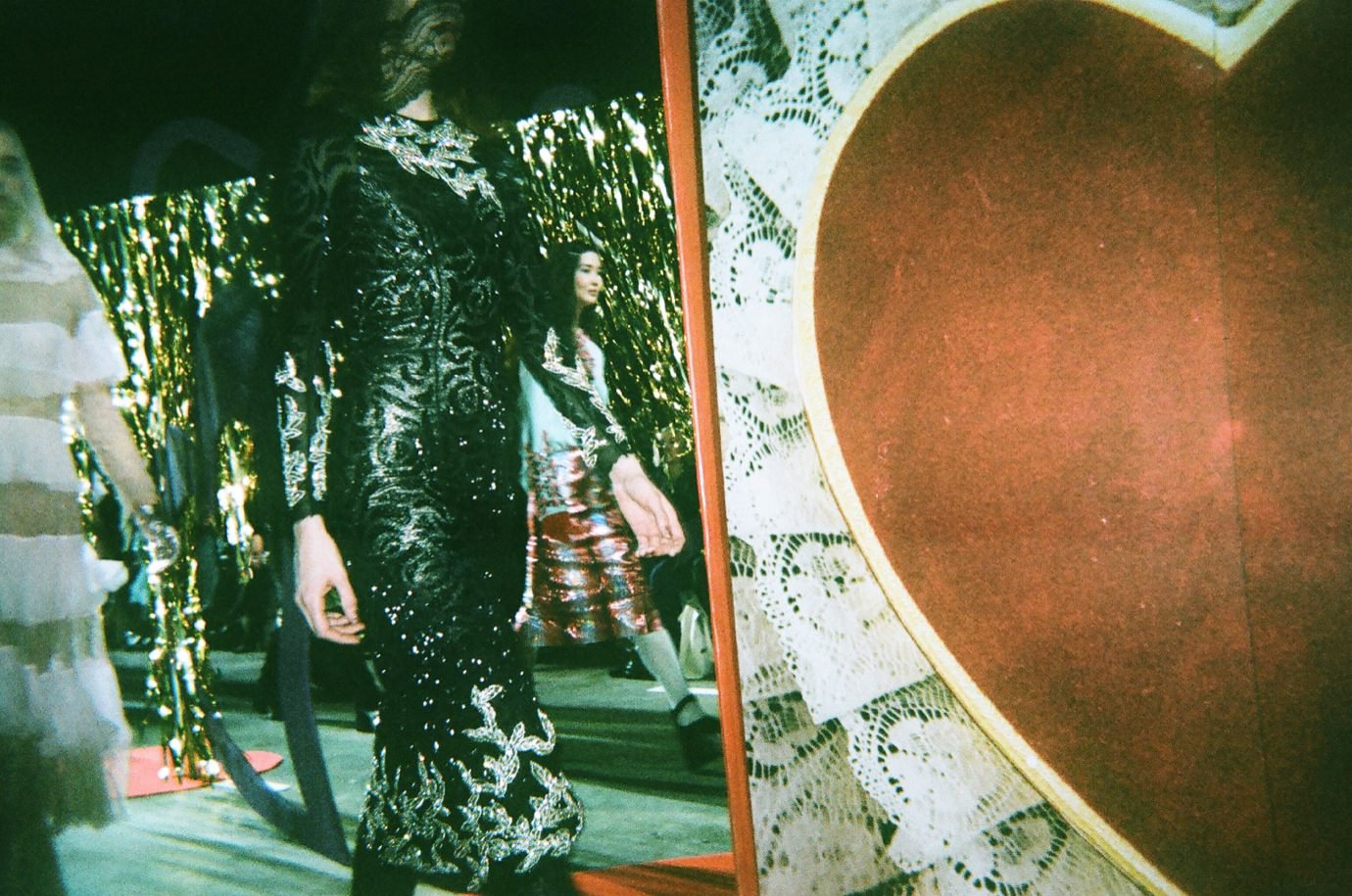When you first set out with Theory, you were arguably the first to use Lycra in production. How important is being novel – whether it’s with textiles, design or business?
Everyone has their own philosophy of how to work and what their own unique platform is. I think that I’m someone who is inspired by the possibilities of the future. I get involved with lots of small, young companies because [of] the opportunity of building something.
So you would say that originality is important then.
It’s important for any company to be authentic and to have a reason and a purpose. It’s not just about making clothes to fill racks in stores – customers have to be inspired to buy the clothes. There has to be a reason why they want them. If you’re selling the cheapest clothes out there, then your philosophy is price – which is a point of view. Listen, Uniqlo is an authentic company in the way it does business. Although the company sells inexpensive clothes, there’s a real purpose to the quality, integrity and also the value.
In a similar vein, I think of heritage and its importance within the fashion realm. What are your thoughts on fashion’s fascination with resurrecting ‘sleeping’ fashion houses like Vionnet and Schiaparelli?
Whatever works. I’m the kind, however, that believes it’s easier to build something from scratch than it is to take something that was broke and rebuild it. When you try to do that, you run into a lot of baggage. Having said that, I bought Helmut Lang from Prada because I was very much inspired by what Helmut Lang himself had done, and the brand he had created. I thought there was a big opportunity to [take] the brand to another place. I suppose that we have used some of the [brand’s original] philosophies, but I’ve not tried to resurrect what Helmut did. We have tried to create something right and inspiring for today.
Having been in this industry for more than 35 years, you’ve witnessed plenty of shifts – both bad and good. What do you like about the industry now?
What I admire about our industry is that anything is possible. An individual can create a company under his or her vision, philosophy and culture. It really is democratic in that way.
And what would you like to see improved? I do remember that a couple of years ago, you launched the Fashion Manufacturing Initiative to help existing NYC factories.
What I’m trying to do with NYC and with the apparel industry is to modernise our manufacturing capability. Design and manufacturing capabilities go hand in hand. If you look at Italy where they make the best shoes and bags, or L.A. where they make the best jeans and T-shirts, it’s because there is a great collaboration between the design and manufacturing community. In New York, we have an incredibly talented base of designers and technicians. The problem is that there is no foreseeable future for the technicians; no one has really fought for them or protected them. The landlords in the Garment District keep raising their rents. They really can’t get the kind of support from the industry that the industry should be giving them. I’ve worked closely with the Council of Fashion Designers of America to try and help out. From what I would like to achieve, what we have achieved so far is very little. But there is the vision, the passion and at least the conversation with the industry, the city and the manufacturing facilities…
Any improvement would affect smaller designers.
It affects the smaller designers and future designers – not big companies. Small companies need great manufacturing infrastructure. One of the things is, big companies think that they don’t need it. Yet if they did have a strong base here with new technology and state-of-the-art manufacturing, the big companies would benefit a lot too.
There are plenty of designers at Central Saint Martins who strike out on their own after graduation. As far as advice is concerned, what might you tell them?
I didn’t start my company until I was 40 years old. Before that, I worked – well, originally for my father and then Anne Klein. I had the experience, a following, and an understanding. So when I did invest my own money, I had a reasonable chance to succeed. What happens is that these young designers have a lot of passion and they think they know a lot more than they do. So they go and they spend a lot of their own money, or their friends’ money, or their parents’ money, when they should be getting experience working for someone else.
Well, let’s say that they aren’t straight out of school. Perhaps they’ve been out in the field for several years. To attract an investor, what do they show? What do they need to have?
They have to have a good idea.
Just a good idea?
Well, it starts with a good idea. The market is crowded. Creating another line of clothes just because designers want to put their name on it is not going to work. They have to recognise an opportunity or a void in the marketplace in which they have an answer for. Look at any great company and how it started. It started by recognising a void in the marketplace, addressing that void, establishing authority and then expanding upon it.
For every good idea, there needs to be the ability to sustain it. If I’m throwing however much money at a great idea, I want to make sure that there is the ability to actually execute it.
My philosophy is that I do not invest in any start-ups.
Correct. But there are other investors that do.
Start-ups are good for some designers. They’ve got to start someplace, but they’ve got to start with a narrow focus and a point of view. They also have to be successful in one category before they explore multiple categories.
Has the criteria by which you invest in a fashion company changed over time?
I know that I say “a good idea”, but integrity is also important. People’s intentions have to line up with a good idea. Some people are straightforward; others are tricky. At the end of the day, I’m investing – I’m not doing the work, so I have to rely on their integrity.
Do you think that every designer needs strong business acumen, or simply a good partner?
Ultimately, you need a good partner to help you out with the business side of things.
I also think of a lot of design duos: Humberto Leon and Carol Lim at Kenzo; Maria Grazia Chiuri and Pierpaolo Piccioli at Valentino…
You know, I think the whole duo thing is good. It gives an opportunity for designers to play off of each other. Collaborating is going to become more of a buzzword in the future than it has been in the past. We’re going to see more companies collaborating with companies, and designers collaborating with other designers. This is important because it adds another level of expertise to the mix. At the end of the day, it’s all about creating the most exciting product or experience.
During the span of your career, what are some of the reasons that a company or a designer might fail?
Expanding too fast.
Yes, that’s very true.
That’s a big problem, right? Companies that over-expand either beyond their financial or management capability is a big issue. Too many companies try to follow other people and not stay true to themselves. Trying to ‘keep up with the Joneses’ – I don’t think that’s a good philosophy either. You have to do it your way.
In your talk at Central Saint Martins, you touched upon the topic of technology and it dictating where the fashion industry is headed. I often think of social media now and how it’s become such a proponent of brands when it didn’t necessarily play such a strong role before.
I think the whole virtual landscape, from marketing to social media to commerce to communication, has totally changed. It’s exciting on one level and very complicated on another level, [especially] for someone who comes from another generation and another style of doing business. There’s a lot one has to learn about changing one’s method of doing business.
How so?
I’m evolving my philosophies and style of management as I live my life. If I didn’t evolve my style of management and my thought process, it would be time for me to retire.
That’s understandable.
Our industry is very much about the world we live in and the world in which we are going to live in. Pop culture and how all that plays into our lives – that’s what our whole industry is all about, right? People are inspired by the way they’re living their life and being influenced by the music they listen to, the movies they watch, and the devices and apps that they use.
You know, I was going to ask – what advice would you give those looking to run their own business someday?
Be true to the best interest of the company. If I’m true to the best interest of the company then I’m true to all the people within it. There are always decisions that go either left or right. Try to have a singular vision of the company you’re making decisions for.
Do you think running a business successfully depends on removing emotion from decision-making?
It’s hard to limit emotion 100 percent. I try to make decisions founded on business judgment, at least when it’s about business. With the design, I can be more emotional. Like, as soon as you and I are finished here, I’m going to look at all of our spring-summer fabrics. I’m going to put myself in the mind of our consumer. I’m going to be thinking about what I want that girl to look like. That’s going to be emotional.









